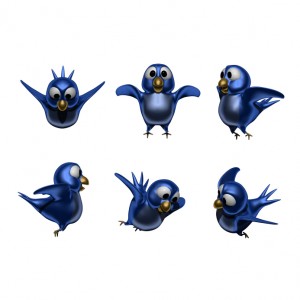 What the #@”RT?
What the #@”RT?
With all of the signs, symbols, and jargon, Twitter can feel like a new language. Luckily, you only have to learn a few terms to effectively manage your Twitter account for a booster club or other small nonprofit. This post is a primer on the most essential ones, and has links to the more advanced stuff.
See our previous post on Twitter for Booster Clubs.
# (Hashtag) is a keyword that organizes content and codes conversations.
On first glance, hashtags are just like blog keywords. You can use them to code your tweets so that others can find them by topic. You can also use keywords as search terms to find other users and subject-specific conversations. However, because tweets are instant, hashtags can be used as hubs for a conversations in real time. Some hashtags we pay attention to are #fundraising, #boosterclub, and #highschool. However, the hashtag is more than just a keyword. It’s also a great tool for organizing live conversations such as meetings, shows, and games. (More about this in a second)

@ (mention)
“@” has two meanings on twitter, depending on the syntax. When you place “@” in front of a username in the middle or end of a tweet, your followers see that person. For example, if you write “Hey @boostertweet, check out this photo,” everyone in your feed will see the tweet, and our twitter account will be alerted that someone mentioned us. This is true even if we don’t follow you.
@ (reply)
When the @ is the first character of a tweet, it becomes a “reply.” You’ll notice this happens automatically when you hit reply at the bottom of a tweet. Replies are like regular tweets, but they are only visible to you, the person you follow, and the people who follow both of you. (A normal tweet pops up for everyone who follows you, as well as anyone you mention and anyone who follows the hashtags you use). So, avoid starting your tweet with and @username.

RT (ReTweet) is simply giving credit to the originator of the post.
There are two ways to acknowledge the author of a tweet and let them know that you are sharing their composition. The first is to simply hit the retweet button. However, sometimes you want to quote someone or edit their tweet slightly. In this case you can write RT @username (their handle, so they are notified).
Via
If you’re composing an entirely new tweet but want to acknowledge the source of a quote, statistic or piece of news, simply write “via @username.”
DM (direct message)
Unless you went in and changed your account to be private, the whole world can see your tweets. That’s usually fine, but sometimes you want to have a private conversation. Maybe you want to correct a misquoted tweet by a parent without chastising them publicly, or just communicate something that won’t be interesting to any of your followers. You can have a none-on-one conversation the direct message function (indicated by the envelope icon). A good example is when you want someone’s email address or phone number, which you should never publish publicly on twitter.
That’s 80% of Twitter
Not so complicated, right? Now, for that other 20%, take your time and learn things as they come along. If you use Twitter a lot you’ll discover many more terms: #FF (follower Friday), compressed URLs (links are long, and you can shorten them with services like bit.ly)…. We could go on, but we’ll leave you in the capable hands of this short 109 word Twitter dictionary.
Refer back to our intro to social media for booster clubs, and subscribe (below) to the Boosterland blog to make sure you don’t miss any of our social media series.



